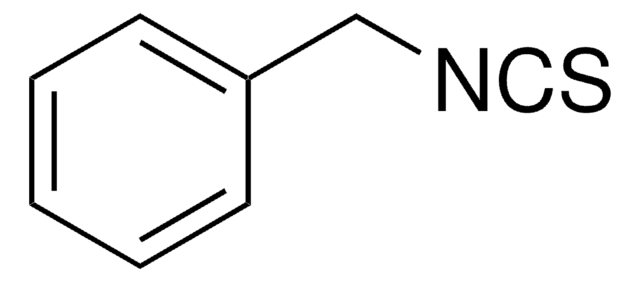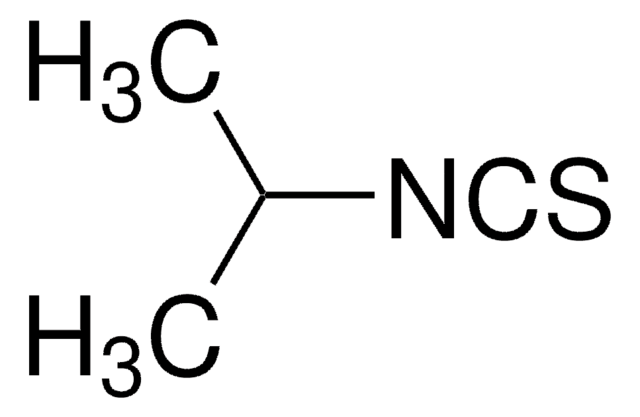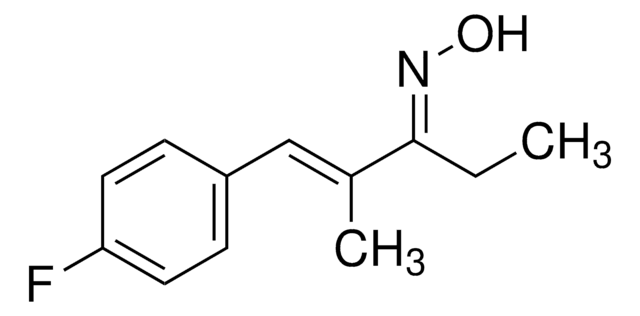377430
Allyl isothiocyanate
95%
Sinónimos:
AITC, Oil of mustard
About This Item
Productos recomendados
Quality Level
assay
95%
form
liquid
contains
BHT as stabilizer
refractive index
n20/D 1.529 (lit.)
bp
150 °C (lit.)
mp
−80 °C (lit.)
density
1.013 g/mL at 25 °C (lit.)
functional group
amine
isothiocyanate
storage temp.
2-8°C
SMILES string
C=CCN=C=S
InChI
1S/C4H5NS/c1-2-3-5-4-6/h2H,1,3H2
InChI key
ZOJBYZNEUISWFT-UHFFFAOYSA-N
¿Está buscando productos similares? Visita Guía de comparación de productos
Categorías relacionadas
Application
- Quantitation of the N-acetylcysteine conjugate of AITC in human urine after ingestion of mustard.
- Evaluation of the fungitoxic activity of AITC vapour on Penicillium expansum on pears, particularly on a thiabendazole (TBZ)-resistant P. expansum strain in vivo, to verify whether AITC treatment could be a substitute for TBZ.
- Study of the induction of acetylation of histone in mouse erythroleukemia cells by some organosulfur compounds.
Biochem/physiol Actions
signalword
Danger
Hazard Classifications
Acute Tox. 2 Dermal - Acute Tox. 2 Inhalation - Acute Tox. 4 Oral - Aquatic Acute 1 - Aquatic Chronic 1 - Eye Dam. 1 - Flam. Liq. 3 - Skin Corr. 1B - Skin Sens. 1
Storage Class
3 - Flammable liquids
wgk_germany
WGK 3
flash_point_f
113.0 °F - closed cup
flash_point_c
45 °C - closed cup
Elija entre una de las versiones más recientes:
¿Ya tiene este producto?
Encuentre la documentación para los productos que ha comprado recientemente en la Biblioteca de documentos.
Los clientes también vieron
Global Trade Item Number
| Número de referencia del producto (SKU) | GTIN |
|---|---|
| 377430-500G | 4061837247378 |
| 377430-100G | 4061831835618 |
| 377430-5G | 4061837247385 |
Nuestro equipo de científicos tiene experiencia en todas las áreas de investigación: Ciencias de la vida, Ciencia de los materiales, Síntesis química, Cromatografía, Analítica y muchas otras.
Póngase en contacto con el Servicio técnico













